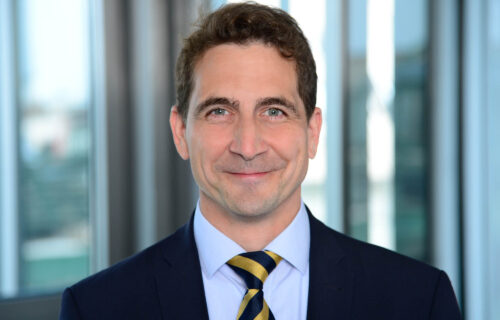Institutional investors across Europe are reaffirming their commitment to real assets, with a growing focus on infrastructure alongside continued demand for real estate, according to the latest survey by INTREAL International Real Estate Kapitalverwaltungsgesellschaft mbH. The 2025 study, which gathered responses from 71 institutions including banks, insurers, pension funds, foundations and family offices, shows that stability and sustainability have become the defining priorities behind investment strategies.
Nearly all respondents—96 percent—said they are already invested in real asset funds or plan to do so in 2026. The majority, 48 percent, allocate to both real estate and infrastructure, while 45 percent remain focused exclusively on real estate and three percent on infrastructure. Only four percent have no exposure to real assets. Within the property market, investors showed the strongest preference for residential at 57 percent and logistics at 54 percent, followed by grocery-anchored retail at 36 percent. Notably, social and healthcare real estate, at 19 percent, has overtaken office properties, which drew only seven percent, indicating a shift toward more resilient, socially oriented investments.
In geographical terms, Germany and the wider European market dominate investor interest, with 67 percent and 63 percent respectively identifying them as preferred regions, while enthusiasm for the United States has waned. ESG considerations continue to play a decisive role, with more than 91 percent of respondents preferring funds classified under Article 8 of the EU Sustainable Finance Disclosure Regulation. By contrast, only one in five would consider Article 6 or Article 9 funds. Risk appetite remains muted, as more than half of investors plan to concentrate on core strategies, and another third favour core-plus investments. That conservative stance is reflected in return expectations: 40 percent expect yields between 3.5 and 4 percent, while 26 percent target up to 4.5 percent and 19 percent aim for a range of 4.6 to 5 percent.
The survey reveals that infrastructure is emerging as a key area of growth. Over half of the respondents, 52 percent, plan to increase allocations to the sector in 2026, while the rest will maintain their current exposure. None intend to reduce it. Markus Schmidt, Head of Business Development Infrastructure at INTREAL, said the trend marks a logical next step in the evolution of institutional portfolios. “Now that real estate has become a permanent fixture in the portfolios of institutional investors, it is evident that the infrastructure asset class is well on its way to gain similar significance,” he said. “This is particularly true for those investors who combine moderate return expectations with a keen emphasis on safety and who wish to exploit additional diversification options.”
Schmidt noted that life insurers, pension funds, family offices and foundations are driving much of this momentum, given their long-term investment horizons and need for predictable income streams. “What makes infrastructure investments so attractive for this target group are stable cash flows of generally long-term predictability,” he explained.
Within the infrastructure segment, renewable energy projects are by far the most attractive, cited by two-thirds of respondents, followed by communications infrastructure at 59 percent. Europe remains the top target region for these investments, with 94 percent of respondents prioritising it and 45 percent specifically naming Germany. Preferences for fund domiciles are evenly divided, with 31 percent favouring German structures and 28 percent preferring Luxembourg, while 38 percent see both as equally suitable.
INTREAL Managing Director Malte Priester described the broadening of institutional real asset portfolios to include infrastructure as a natural progression. “The growing expansion of institutional real asset fund investments to include the infrastructure asset class is part of a plausible evolution after real estate funds became established and in the wake of the segment’s increasing differentiation over the past two decades,” he said. He added that INTREAL’s decision to broaden its licensing and service capabilities in both Germany and Luxembourg supports this shift. “We are aware of significant growth upside here in the years ahead, not least because of the massive capex requirements in Germany’s infrastructure sector and the manifest political resolve to create corresponding investment stimuli,” he said.
The 2025 INTREAL survey highlights a clear directional change in institutional investment: the pursuit of stability and sustainability now outweighs the chase for yield. Infrastructure, supported by energy transition and digital connectivity trends, is fast becoming the next cornerstone of Europe’s real asset landscape.
Photo: Malte Priester, Managing Director at INTREAL
